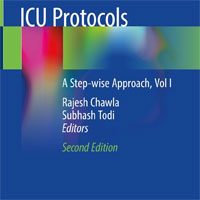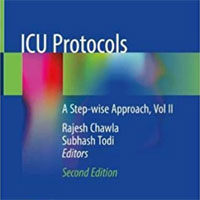Tag: guidelines
A randomized trial of supplemental parenteral nutrition in underweight and overweight critically ill patients
Nutrition guidelines recommendations differ on the use of parenteral nutrition (PN), and existingclinical trial data are inconclusive. Our recent observational data show that amounts of energy/protein receivedearly in the... read more
Diagnosis, Prevention, and Treatment of C. difficile: Current State of the Evidence
This is a summary of a systematic review that evaluated the recent evidence regarding the accuracy of diagnostic tests and the effectiveness of interventions for preventing and treating Clostridium difficile (C. difficile)... read more
Clinical Practice Parameters for Hemodynamic Support of Pediatric and Neonatal Septic Shock
The American College of Critical Care Medicine provided 2002 and 2007 guidelines for hemodynamic support of newborn and pediatric septic shock. Provide the 2014 update of the 2007 American College of Critical Care Medicine... read more
BTS Guideline for oxygen use in healthcare and emergency settings
The updated guidance is based on new evidence about how effective prescribing and delivery of emergency oxygen for patients can both improve health and save lives. The 2015 emergency oxygen audit report provides information... read more
Clinical Practice Guideline: Mechanical Ventilation in Adult Patients with ARDS
An Official American Thoracic Society/European Society of Intensive Care Medicine/Society of Critical Care Medicine Clinical Practice Guideline: Mechanical Ventilation in Adult Patients with Acute Respiratory Distress Syndrome.... read more
New Telestroke Guidelines by American Telemedicine Association
These new telestroke guidelines were developed to assist practitioners in providing assessment, diagnosis, management, and/or remote consultative support to patients exhibiting symptoms and signs consistent with an acute... read more
CDC and Prevention Guideline for the Prevention of Surgical Site Infection
This guideline is intended to provide new and updated evidence-based recommendations for the prevention of SSI and should be incorporated into comprehensive surgical quality improvement programs to improve patient safety.... read more
Why Does Conflict of Interest Matter?
In this Viewpoint, the former president of the Institute of Medicine discusses the importance of conflicts of interest to the integrity of the medical profession, and the importance of policies to manage conflicts of interest... read more
Venous congestion: are we adding insult to kidney injury in sepsis?
In critical illness, septic shock is a contributing factor in nearly half of all cases of acute kidney injury (AKI). Traditional approaches to prevention of organ dysfunction in early sepsis have focused on prevention of... read more
Clinical Practice Guidelines for Sustained Neuromuscular Blockade in the Adult Critically Ill Patient
Dr. Todd Fraser, MD, speaks with Michael J. Murray, MD, PhD, FCCM, FCCP, about the article, "Clinical Practice Guidelines for Sustained Neuromuscular Blockade in the Adult Critically Ill Patient," published in Critical Care... read more
The Sick and the Dead: Evidence-Based Trauma Resuscitation
The science of trauma resuscitation has undergone a fairly massive evolution in the past decade. This talk was our attempt to summarize the best-of-the-best in trauma literature from the past several years, and package it... read more
Draft quality standard on rehabilitation after a critical illness
New guideline to be published in 2017. We've published a draft quality standard on rehabilitation after a critical illness: Quality standard consultation. You can now comment on this draft quality standard. Closing date... read more
Data Authorship as an Incentive to Data Sharing
Data from well-designed and well-executed research not only are useful for the original purpose and secondary analyses by the original researchers but also can be repurposed for a variety of applications, including independent... read more
Surviving Sepsis Campaign Guidelines: 2016 Update
Ludwig Lin, MD, speaks with Mitchell M. Levy, MD, MCCM, about the release of the "Surviving Sepsis Campaign: International Guidelines for Management of Sepsis and Septic Shock: 2016," presented at the 46th Critical Care Congress... read more
Management of COPD exacerbations: a European Respiratory Society/American Thoracic Society guideline
This document provides clinical recommendations for treatment of chronic obstructive pulmonary disease (COPD) exacerbation. This recommendation places a high value on improving clinical outcomes and a lower value on the burden... read more
Comparing Use of Low-Value Health Care Services Among U.S. Advanced Practice Clinicians and Physicians
Many physicians believe that advanced practice clinicians (APCs) provide care of relatively lower value. APCs and physicians provided an equivalent amount of low-value health services, dispelling physicians' perceptions... read more
New Guideline Will Allow First-Year Doctors to Work 24-Hour Shifts
First-year doctors in training will now be permitted to work shifts lasting as long as 24 hours, eight hours longer than the current limit, according to a professional organization that sets work rules for graduates from... read more
Care that Matters: Quality Measurement and Health Care
Barry Saver and colleagues caution against the use of process and performance metrics as health care quality measures in the United States. There is limited evidence that many "quality" measures - including those... read more
Why the New Sepsis Guideline Changed
Recent guidelines for how to best manage septic shock have changed. Gone are recommendations for central venous oxygen saturation monitoring and goal-directed therapy. In is the concept that septic shock be treated as an... read more
No IV Hydration for Contrast Nephropathy? AMACING Trial Challenges a Cornerstone of Prophylaxis
A Dutch study undercutting the established role of hydration in preventing kidney damage during procedures is raising eyebrows. Dutch researchers are calling into question one of the cornerstone practices of cath labs and... read more
New Guidelines for Accurate Diagnosis of C. difficile Infection
Clostridium difficile infection (CDI), a potentially lethal bacterial infection, causes colon inflammation and is responsible for 3,700 deaths in Europe per year. This highly symptomatic infection causes fever, diarrhea,... read more
Glut of Anesthesia Guidelines a Disservice, Except for Lawyers
Anesthesia practice guidelines are out of control, too many to adopt, too anecdotal to accept and too political to take seriously! Clinicians are already ignoring and pushing back on guidelines. A study presented at the recent... read more









